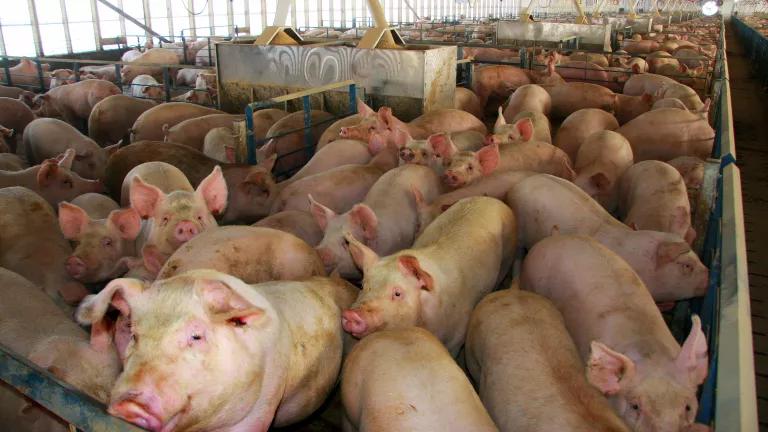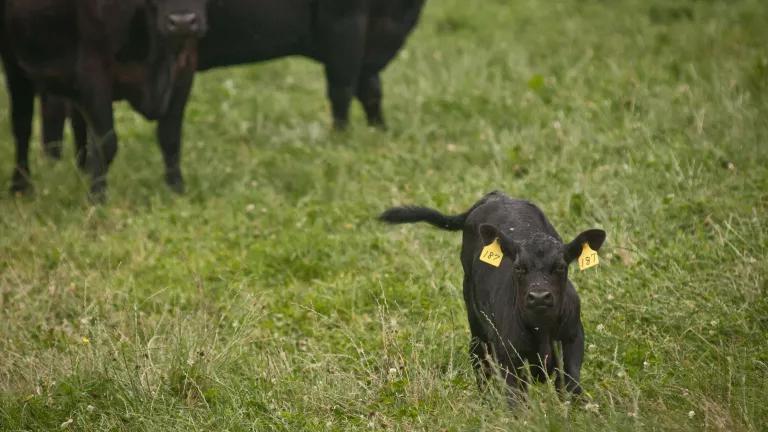Our Food System Is Broken. Cities Can Help Fix It.
Just as the problem of food waste and a broken food system existed long before Covid-19, so have the solutions. Now is our time to act.
As we saw several months ago, the food supply chain in the United States is complicated and fragile. Getting food from producer to end user often involves long distances, countless intermediaries and a high degree of interdependence between all those actors. Large food players are simply not nimble enough to adjust on-the-spot to dramatic shifts in demand: a 20-lb bag of fresh salad bound for a hotel does little good on the supermarket shelves, and the equipment needed to package it into 5 oz bags simply can’t be created overnight.
When food service operations were forced to shut down overnight when the Covid-19 crisis hit, our country’s broken food system became painfully apparent to all of us.
During the pandemic, the percentage of the US population experiencing restricted access to abundant and varied food—as supermarket shelves were picked over and food service establishments shuttered—has increased significantly. Not since World War II had so many people in our country had to contemplate daily consumption trade-offs and compromises: should I use that expired can of soup I would have previously thrown away? Can I bake another batch of chocolate chip cookies, given my household’s rapidly dwindling stock of flour? For seniors, the fear of leaving home at all may mean accepting whatever family or neighbors can buy for them.
The pandemic has brought our country to its knees in ways once unfathomable. The massive wedge it has driven between Americans and access to convenient, quality food is not the most pressing issue, but it is certainly one with significant emotional and tangible repercussions. Wasting food now hurts, when millions of Americans have lost their jobs and are struggling to put food on the table. Demand for food from food banks and pantries has increased by as much as 100%, and the average American is feeling the pressure to make use of every last scrap like never before.
However, while the images of mounds of waste are certainly heartbreaking, unlike this virus they are not novel. Photos of staggering amounts of wasted food before the Covid-19 epidemic are surprisingly easy to find. Just months ago, before many Americans gave much thought to the subject of food waste, we as a country were wasting as much as 40% of food every year.
As much as 50% of farmer yields are routinely plowed under: not because they are rotten or inedible, but because there is no market for the harvest. Cosmetic standards on fruit and vegetables set by the USDA keep millions of pounds of perfectly edible produce—sometimes carrying the moniker of “ugly fruit and vegetables”—from ever reaching a supermarket shelf or restaurant kitchen. At the same time, confusing food packaging dates, while connected in no way to food safety guidelines, during normal times result in up to 20% of household waste, with up to 90% of Americans tossing perfectly edible food because they perceive it as having “gone bad” when it has not.
There are many other egregious, but solvable, causes for the food waste problem, now exacerbated by the Covid-19 pandemic. At the same time, this crisis is not without “silver linings”—innovations by agile businesses pivoting from food wholesale to food retail overnight. Cities like New York are hiring taxi drivers now underemployed to assist in food rescue. And catering companies are firing up underutilized commercial kitchens to feed front line workers, using whatever stimulus and charitable funding they can patch together. They are all doing their part, often at their own expense, to prevent additional wasted food.
The power and capacity of local governments to be swift and effective in their actions is encouraging. With support from the Rockefeller Foundation, and partnerships with the cities of Denver and Baltimore, NRDC “placed it bet” on the abilities of cities to tackle food waste beginning in 2016. Since then, Food Matters marshalled critical resources to government and local non-profit partners, developing tools and strategies to dramatically reduce food waste through a systems-level approach designed to deliver long-term impacts. Just as frontline workers are helping to defeat Covid-19, cities are frontline actors in the fight on food waste.
The equalizing force of Covid-19 has subjected more Americans than ever before to the underlying dysfunction, waste and inequality of our food system. Unsurprisingly, as households seek to minimize trips to large, often crowded, supermarkets, demand for local food, especially businesses offering home delivery, has surged during the pandemic. Many of these small farmers and producers have built sustainability, resiliency and equity into their operating model.
We now have the opportunity to wage a renewed, strengthened fight on food waste and to double down on efforts to transform our broken food system. This will require local governments to continue support of food rescue, expanded SNAP provisions and incentives to make sales between farmers and retailers easier and federal date label standards to prevent edible food from being needlessly thrown away. As consumers, we can do our part by placing more of our food dollars towards community supported agriculture and other local food producers.
Just as the problem of food waste and a broken food system existed long before Covid-19, so have the solutions. Now is our time to act.


